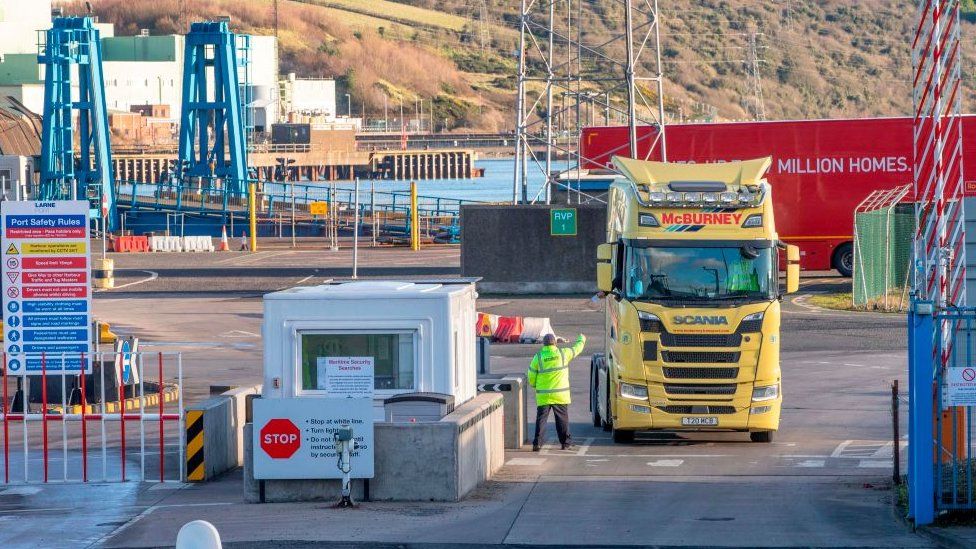Brexit: What is the Northern Ireland Protocol?
- Published

The Northern Ireland Protocol has been a source of tension since the UK left the European Union.
It allows goods to be moved across the border between Northern Ireland and Ireland without them being checked.
Why is the Northern Ireland Protocol needed?
Before Brexit, it was easy to transport goods across the border between Northern Ireland and Ireland because both were in the EU.
After Brexit, the UK - including Northern Ireland - left the EU, while Ireland did not.
The EU has strict food rules and requires border checks when certain goods - such as milk and eggs - arrive from non-EU countries.
The land border is a sensitive issue because of Northern Ireland's troubled political history. It was feared that introducing cameras or border posts to help with checks on goods could lead to instability.
The UK and the EU agreed that protecting the peace deal for Northern Ireland - the Good Friday Agreement - was an absolute priority.
So, both sides signed the Northern Ireland Protocol as part of the Brexit withdrawal agreement. It is now part of international law.
How does the protocol work?
Instead of checking goods at the Irish border, the protocol agreed that any inspections and document checks would be conducted between Great Britain (England, Scotland and Wales) and Northern Ireland.
These take place at Northern Ireland's ports.
It was also agreed that Northern Ireland would keep following EU rules on product standards.
How does the UK want to change the protocol?
To reduce the need for checks, the UK government wants different rules for goods sent from Great Britain to Northern Ireland than for goods which cross the border into Ireland.
A green lane would be for trusted traders transporting goods to Northern Ireland only. These would be exempt from checks and customs controls.
A red lane would be for products going to Ireland and the rest of the EU. These would undergo full checks and customs controls.
Tax rules would also be changed. Businesses in Northern Ireland follow EU rules on state aid and the sales tax, VAT. That means government payments to help firms in Northern Ireland, and tax breaks, must be within EU limits.
The UK government wants to remove these limits.
It also wants an independent body to settle disputes over the Northern Ireland Protocol, rather than the European Court of Justice.
Who opposes the protocol?
Unionist parties support Northern Ireland being part of the UK. They argue the current checks - placing an effective border across the Irish Sea - undermine Northern Ireland's place within the UK.
The largest unionist party, the DUP, is refusing to take part in Northern Ireland's power-sharing government unless its concerns are resolved.
Even though the DUP came second in May 2022 elections to Sinn Fein - a nationalist party that accepts the protocol - a new Northern Ireland government cannot be formed without its support.
What is the EU saying?
On 15 June, the European Commission started legal action against the UK for not keeping to the protocol, and called on the government to join negotiations.
The EU said it was not prepared to renegotiate the protocol, but has offered to work on how the rules apply, including:
- reducing customs and checks on goods
- reducing the amount of paperwork
- relaxing rules so chilled meats can still be sent across the Irish Sea.
In January, the two sides reached agreement on sharing data on trade. This will allow the EU to access the UK's IT systems for detailed information about goods sent from Great Britain to Northern Ireland.
The UK and the EU said they would "work rapidly" on other issues, raising hopes of a possible deal before the 25th anniversary of the Good Friday Agreement in April.